This is a free fortnightly newsletter about the New Zealand Net.
If you would like to be notified by email when a new edition is published, please contact ZL1NZ.
Browse our Newsletter Archive and List of Net Tips.
Featured key
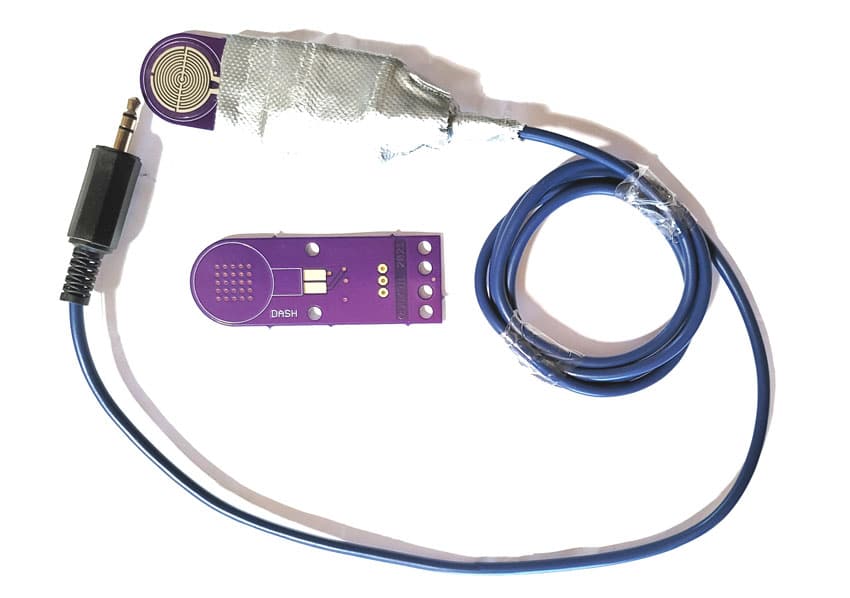
VK3IL pressure paddles. Photo: ZL1ANY
By Stephen ZL1ANY
Here is my recently constructed VK3IL Pressure Paddle V2.
I am surprised at how well it works. The only downside is its lack of mass, but it is primarily designed for portable operation so one cannot complain too much.
I currently have to hold the paddles in one hand while sending with the other hand. If anyone has a clever idea for an appropriate mount, please let me know.
The pressure paddles (which I ordered via AliExpress) are very sensitive.
* If you have an interesting key for this feature, please send me a nice clear photo and a few words describing it.
Quick notes
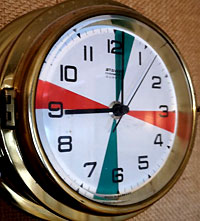 It’s back to NZ Standard Time this weekend. The NZ Net always convenes at 2100 hours local time, but for our overseas fans, that will be 0900 UTC instead of 0800 UTC starting next Monday.
It’s back to NZ Standard Time this weekend. The NZ Net always convenes at 2100 hours local time, but for our overseas fans, that will be 0900 UTC instead of 0800 UTC starting next Monday.
Parts of Australia are also changing clocks this weekend but the VKCW Net stays on UTC year-round (0603 Wednesdays on 14049 kHz), so will be an hour earlier for those of us in New Zealand, at 1803 local time.
April is always a busy month on the radio. We have the following:
10 April: Wahine anniversary
15 April: Maritime Radio Day (Titanic anniversary)
18 April: International Amateur Radio Day
22 April: International Marconi Day (Saturday closest to the birthday of Guglielmo Marconi on 25th)
27 April: Morse Code Day (birthday of Samuel Morse)
Did I miss anything?
Speaking of busy, Grant ZL2GD will be fully occupied during the next few weeks dismantling his radio station and packing up the household for a move from Swannanoa to another rural property, near Oxford. The new place has plenty of room for aerials and, with luck, it will be as low-noise as Grant’s current location.
Graeme ZL2TE in New Plymouth will be joining the Net Control roster while Grant is off the air. Graeme will do Monday evenings and Gerard ZL2GVA will take over Tuesdays. Hoping for a big turnout next Monday to welcome Graeme.
Net Control Stations have been experiencing some difficulties the past few weeks with stations transmitting on top of each other during the net. In some ways it’s understandable: we have some weak signals at the moment and many ops have high noise. However, if everyone follows standard net protocol it shouldn’t happen. So, in this edition of Net News, the NZ Net Tip makes its return with advice on when to check-in and when to maintain radio silence. It’s near the end of this newsletter.
The ZL Autumn Sprints return next Tuesday at 0800Z (8pm) and will run on all four Tuesdays in April on 80m. Work as many other stations as you can in an hour with the first half hour being CW and the second half hour SSB (or use the second half-hour to rest up for the NZ Net at 0900Z!). The exchange is signal report and outside temperature (if it is below zero then record the number with an “M” in front of it, e.g. M1 is minus 1). Each contact is worth one point and there are no multipliers.
Is there an ideal straight key technique?
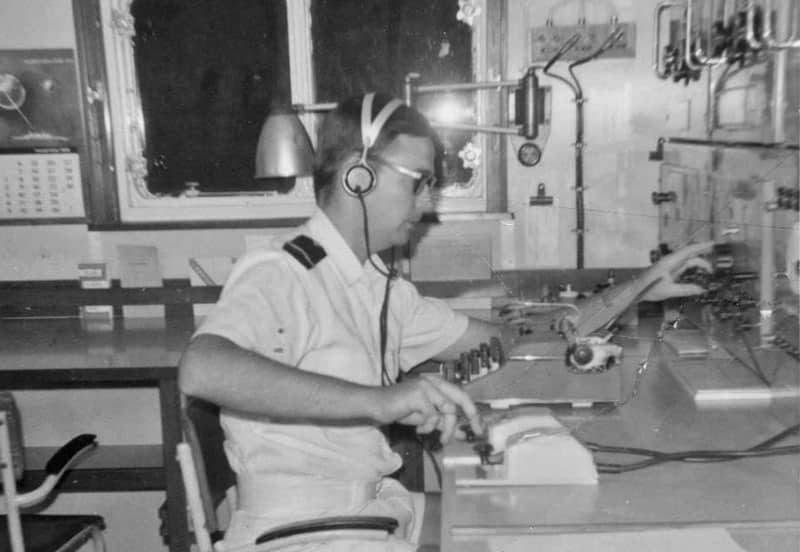
The author sending on a Junker key aboard MV Straat Lombok in 1965
By Herman VK2IXV
People often ask what is the best method for gripping the knob of an up-and-down or straight Morse key. I find this hard to answer, as I believe that there are several styles to send a decent drop of Morse.
In 1959, at the Radio-Holland Marine Radio College in Amsterdam, we were taught to grasp the knob of the key with thumb and middle finger, and rest the forefinger on top of the knob. Our Morse keys were situated at the front of our desks and our forearms were suspended in free space, more or less horizontal.
Much later I read that this was called the European method. To have the Morse key positioned at the far side of the desk with the operator’s elbow resting on the desk was called the American method.
During sending, with the arm in free space, the down pressure on the key is produced by the mass of the forefinger and the forearm. The fingers and wrist were not supposed to move too much. However, because your wrist acts as a hinge between arm and hand, you will find that in practice your wrist will flex slightly and more than slightly when using the American style. But be aware that too much flexing of the wrist over long periods could cause the dreaded glass arm (RSI). Should this happen, then it is time to reach for a bug key.
To send good hand Morse on a straight key there are, therefore, many more factors involved than just holding the knob of the key the correct way. Additional factors are:
- the location of the key on the front or the rear of the desk
- the height of the desk
- the weight and design of the key
- the length of the lever
- the shape of the knob (doorknob-style, flat, round, tall)
- the presence of a knob-skirt
- the spacing of the key contacts
- the tension of the spring
- whether you are relaxed or tense.
In other words, the factors are part hardware and part psychological.
I recall that in the 1960s my boss, the Chief Radio Officer on the Dutch passenger/cargo ship Prins der Nederlanden (callsign PGVR) sent fast and perfect Morse on his personal straight key, from which he had removed the tension spring.
So my theory is that as long as you are in control of your key, comfortable with your own style and speed, and are not being told in plain language that “you are sending with your left foot” or by Q-code QSD or QRK0-1, then you are doing fine.
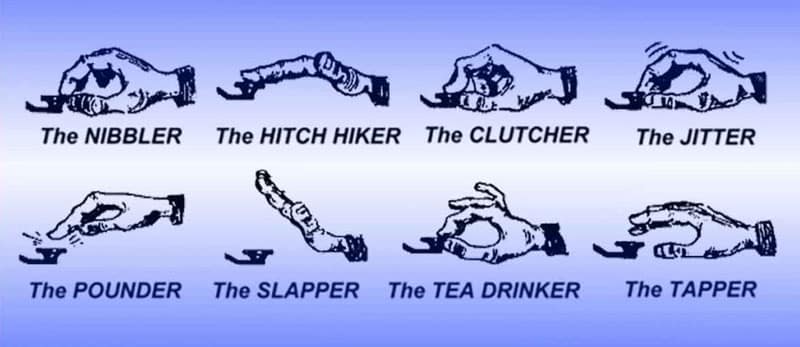
A few ‘non-standard’ styles of sending Morse Code with a straight key
Originally published in Old Timer News, journal of the Radio Amateurs Old Timers Club Australia Inc, Nr 40, Sep 2015
A lovely station design
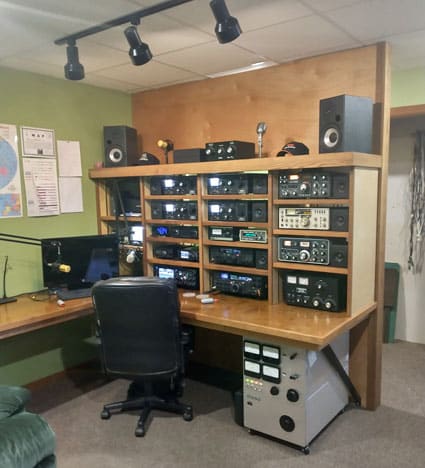 I’ve always said that if I had enough room, I would build a ham shack like this one, which belongs to K9WAF.
I’ve always said that if I had enough room, I would build a ham shack like this one, which belongs to K9WAF.
Yes, most of us don’t have basements in New Zealand.
Yes, my station would have a lot more keys and a lot fewer microphones.
But I still LOVE this design.
Why is that?
The answer is in the second photo!
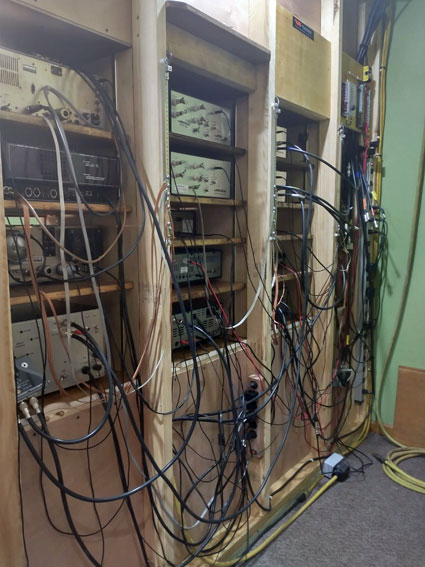 How wonderful would it be to just walk behind the wall and have access to all the cabling?
How wonderful would it be to just walk behind the wall and have access to all the cabling?
In a boat anchor station such as mine, there’s a lot of outboard gear (keyers, antenna tuners, SWR meters, filters, power supplies, and so on) which means a giant mess of cables behind the gear.
I dream of having a shack like this!
Do any of our readers have such a shack? Send your shack photos and tell us how you built it.
Photo flashback
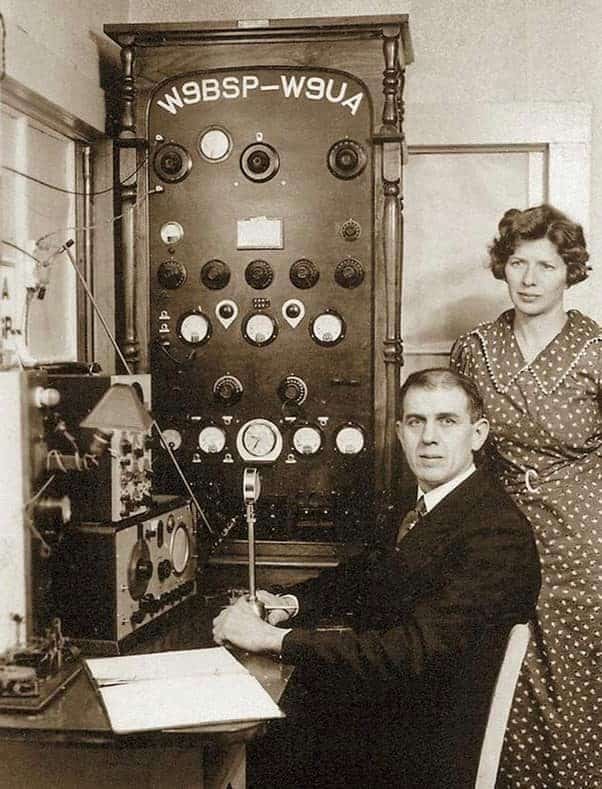
1937 ham shack of W9BSP and W9UA
I imagine there’s a story behind this photo. Perhaps Loretta W9UA is looking a bit grumpy because her brother Marshall W9BSP hid her Vibroplex so he could work some fone?
Or maybe because he built their new transmitter into her favourite grandfather clock cabinet?
Morse challenge
Your challenge is to tell me the callsign of MV Monte Palomares. It’s in the video below.
Please send your answer via radiogram or email to ZL1NZ.
Answer to previous Morse challenge
The first session of NZ Net was held on 25 March 2019. Correct answers were received from VK3DRQ, ZL1ANY, ZL1AYN, ZL1RA and ZL2GVA.
Video: A smooth bug operator
Andrés EA2AJB has one of the nicest bug fists I’ve ever heard – or seen. In this video, he sends a message from special event station EG1NMP, marking the anniversary of the sinking of M/V Monte Palomares (see NZ Net News 96).
I find it remarkable how little hand motion Andrés uses. It’s much more like the paddle/electronic keyer approach, compared with the slamming and crashing that so many bug users (myself included) adopt in order to make the dot pendulum vibrate strongly.
Most bug users that I know keep their hand fairly rigid and roll their wrist on the desktop. Andrés, by contrast, keeps his wrist stationary and uses his fingers. He clearly has his Vibroplex Original adjusted extremely well, and is a master at using it.
Net Tip: When to check in – and when to wait
Stations are welcome to check into the net when NCS sends “QNI PSE” or “ANY MORE?”.
We also allow tailgating. So, if another station check-ins, and NCS acknowledges them and asks them to wait (<AS>), then feel free to jump in with your sine.
But please do NOT try to check in just because you cannot hear anyone on the frequency.
NCS will never just let the frequency go quiet for more than a few seconds. So if you have just tuned in, or returned to the net frequency from a QNY, and you don’t hear anything, it is almost guaranteed that the other stations on the net are straining to copy a weak signal through the QRN. Please be patient and wait for the invitation to QNI.
If you have trouble copying NCS, again please be patient. The NCS station will always ask at least one other station with a strong signal to call for check-ins. We normally try to choose a station some distance from our own if one is available.
If you hear someone trying to check-in, but none of the NCS ops hear them, you can respond when NCS asks “ANY QSP?” or just check in again (see the first paragraph) and inform NCS by sending something like “QSP ZL3XYZ”.
Advertising archive
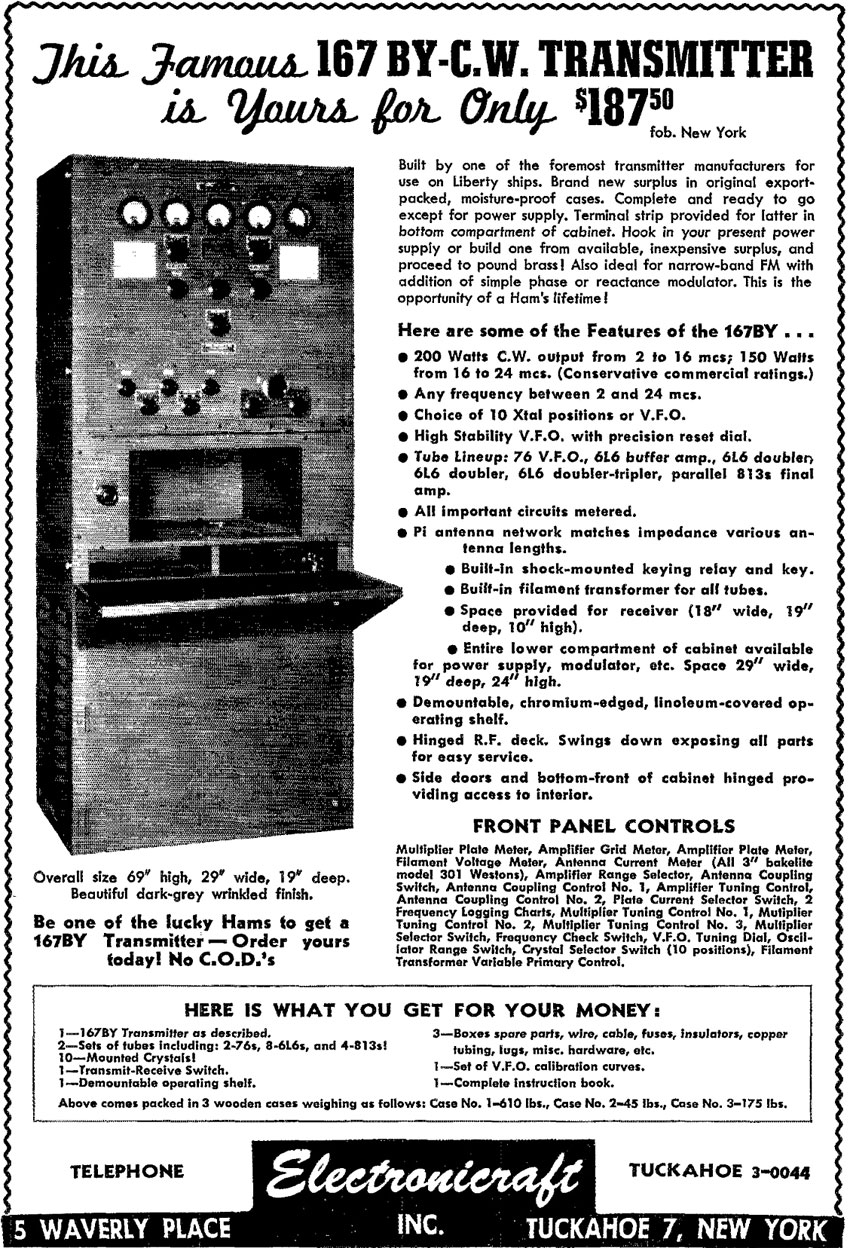
QST magazine, Feb 1948. NB: Case 1 weighs 610 lb (277 kg) so you might need a few mates to help you carry it into the shack.
Suggestions?
If you have suggestions on how to make the NZ Net better, or things you’d like to see covered in these updates, please contact ZL1NZ. You might even like to write something for the newsletter.
Thanks for reading, and I hope to hear you soon on the NZ Net!
—
Neil Sanderson ZL1NZ, Net Manager
New Zealand Net (NZ NET)
3535.0 kHz at 9pm NZT Mon-Fri


